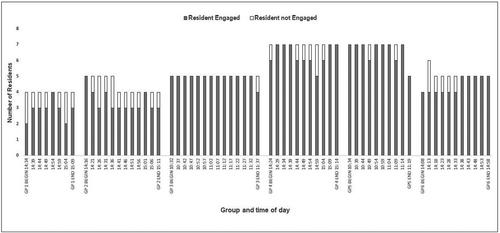JAVA Memory Care program: Facilitating social and occupational engagement for older adults living with advanced dementia
Abstract
Background and Objectives
Residents in aged care homes often report lack of life purpose and meaning and limited opportunities to contribute to their community. The JAVA Memory Care program is designed to facilitate engagement for older adults with advanced dementia. This study explored whether JAVA Memory Care engaged such adults meaningfully, on social and occupational levels, within one Australian residential care home.
Methods
A mixed method design guided this exploration. Trained staff facilitated six JAVA groups over 2 months. Three sources of data were utilised. Observational data (qualitative and quantitative) were obtained using a narratively enhanced Assessment Tool for Social and Occupational Engagement (ATOSE). The other two data sources were qualitative and analysed thematically: reflections by the lead JAVA facilitator and data generated by a research discussion group.
Results
The quantitative data comprised 564 ATOSE behaviour markers. Participants were categorised as being engaged in 93% of these markers. Two of the three qualitative themes focused on the collective and self-expressive nature of participant engagement. The third theme focused on practicalities such as time pressures, facilitator training, resident selection, and resource preparation. For residents, the groups provided a context for relating meaningfully to others.
Conclusion
The JAVA program achieved a high level of engagement. However, it was a time intensive intervention and required a person-centred philosophy, appropriate staff training, organisational support, and a suitable quiet space. The program had positive benefits, but practical issues identified needed to be considered before implementation.


 求助内容:
求助内容: 应助结果提醒方式:
应助结果提醒方式:


